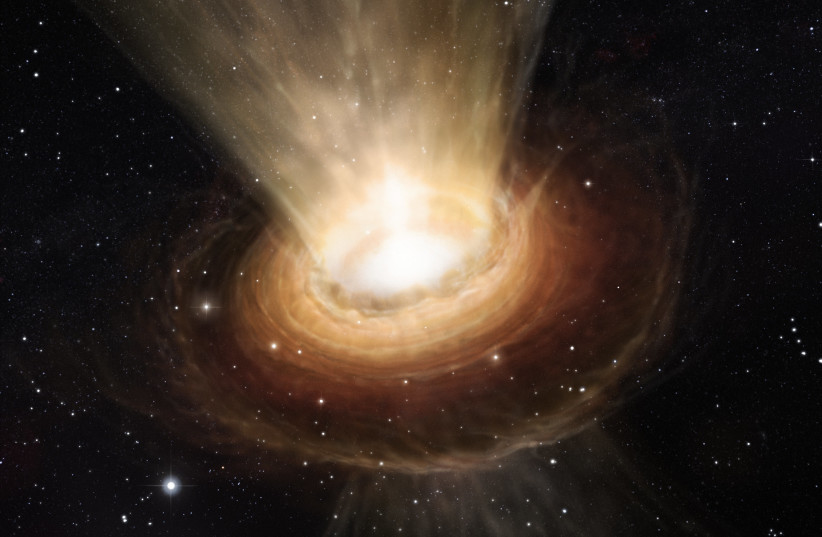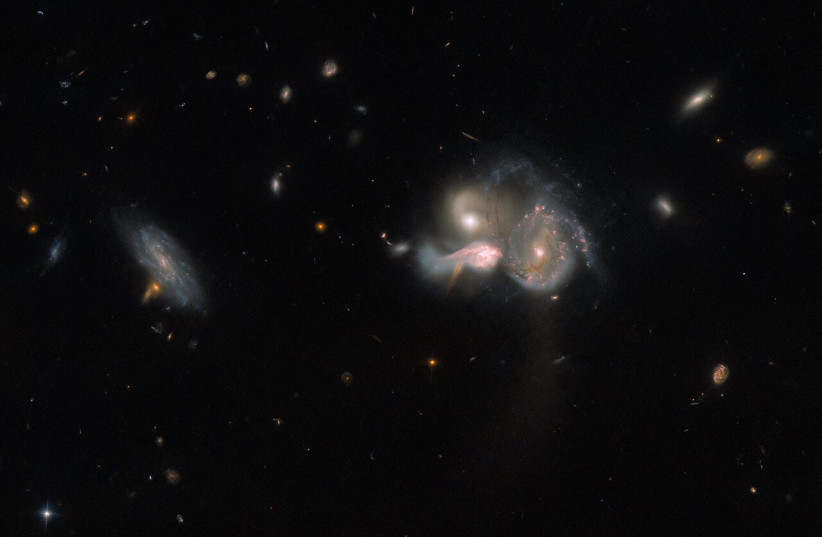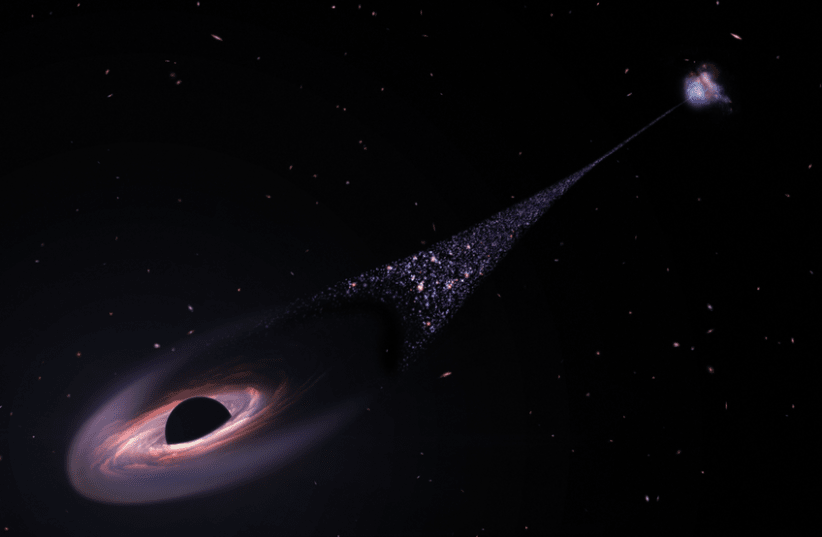There's a supermassive black hole on the loose, barreling through space in the blink of an eye, leaving a 200,000 light-year-long breadcrumb path of stars behind it, according to a new NASA-backed study.
This enormous object with the weight of 20 million solar masses has left behind a trail so massive that it far surpasses anything scientists have ever seen before – being twice as wide as the Milky Way Galaxy itself.
The findings of this study were published in the peer-reviewed academic periodical The Astrophysical Journal and were made possible due to an accidental discovery of NASA's Hubble Space Telescope.
Cosmic Pac-Man in reverse: The "invisible monster" black hole and a bizarre game of galactic billiards
Black holes are concentrations of gravity formed when a large star dies. They are so strong that nothing, not even light, is able to escape. And there are extremely plentiful throughout the universe – one study even putting the number of black holes in the observable universe at around 40 quadrillion – and very mysterious – no light means you can't see them, you can only tell they exist generally speaking by how their gravitational pull influences everything around it.
Supermassive black holes, however, are even larger, technically measuring over 100,000 solar masses but could even measure millions and billions of solar masses. To put that into perspective, one solar mass is equal to the Sun.

These black holes can be found at the center of most spiral galaxies. Our Milky Way Galaxy is no exception, with the supermassive black hole Sagittarius A* essentially being what the entire galaxy revolves around.
But what about outside galaxies? Is such a thing even possible?
Yes. This is something called a runaway black hole – or in this case, a runaway supermassive black hole. It's what happens when a black hole ends up ejected from its galaxy.
Now, how does this happen?
Odds are, it's what happens when more than one supermassive black hole enters the mix.
In this particular case, the scientists behind this study seem to think that it was due to a galactic merger.
Galactic mergers are what happens when galaxies merge together. One such example was recently captured by Hubble, which spotted three galaxies merging into each other.
When this happens, the result is a much larger new galaxy.

Our own Milky Way Galaxy is set to merge with our neighbor, the Andromeda Galaxy, within the next few billion years.
Now, when this happens, the planets and stars of both galaxies don't usually end up colliding with each other because there is so much space in between. However, this isn't the case with supermassive black holes, which start out orbiting each other. Something like this was even seen by Hubble back in January.
But over some millions of years, the supermassive black holes may eventually merge together, which can trigger massive gravitational ramifications for the entire new galaxy.
So why didn't this happen here? How did a supermassive black hole somehow wind up ejected from its galaxy?
Well, according to the scientists behind the study, the answer may be that while the merger was happening, a third galaxy entered the mix, bringing its own supermassive black hole with it.
Two supermassive black holes alone have considerable ramifications on gravity. When a third one gets involved, it gets even more intense. Ultimately, the end result seems to have been that one of these supermassive black holes had to go, ejected due to the laws of gravity like a cosmic game of billiards, shooting it off across space.
Now that this black hole is free, what is interesting is where it's going – and what it's leaving in its wake.
NASA compared it to cosmic Pac-Man but in reverse, rather than devouring a path of stars as it runs through space, it's actually creating new ones. This is because of the interactions between the black hole and the gas it comes into contact with since it's moving too fast to actually devour much of anything.
In fact, it's moving so fast that it could theoretically travel the entire 384,000-kilometer distance between the Earth and the Moon in just 14 minutes.
Of course, while we know this does happen, what we don't know is exactly how or why it works at all.
So how did scientists find it, if black holes are so hard to see?
It turns out, by complete and utter accident.
The scientists behind this study, from Yale University, were studying a nearby dwarf galaxy with Hubble when they saw a strange streak of stars that shouldn't be there.
After looking closely at it, they realized that on one end was a galaxy of origin, and on the other hand a supermassive black hole.
But one question still remains: What happened to the other black hols in this merger? Are they still there?
The scientists don't think so. Rather, they think they ended up shooting off in the opposite direction.
This means that not only are there now two other runaway supermassive black holes out there somewhere but there is also a very large galaxy once home to three supermassive black holes that now possess none at all – and observation of that galaxy may support this.
But to know more, NASA needs to look more. Using more advanced telescopes such as the James Webb Space Telescope and the Chandra X-ray Observatory can shed more light on this bizarre black hole bonanza.
